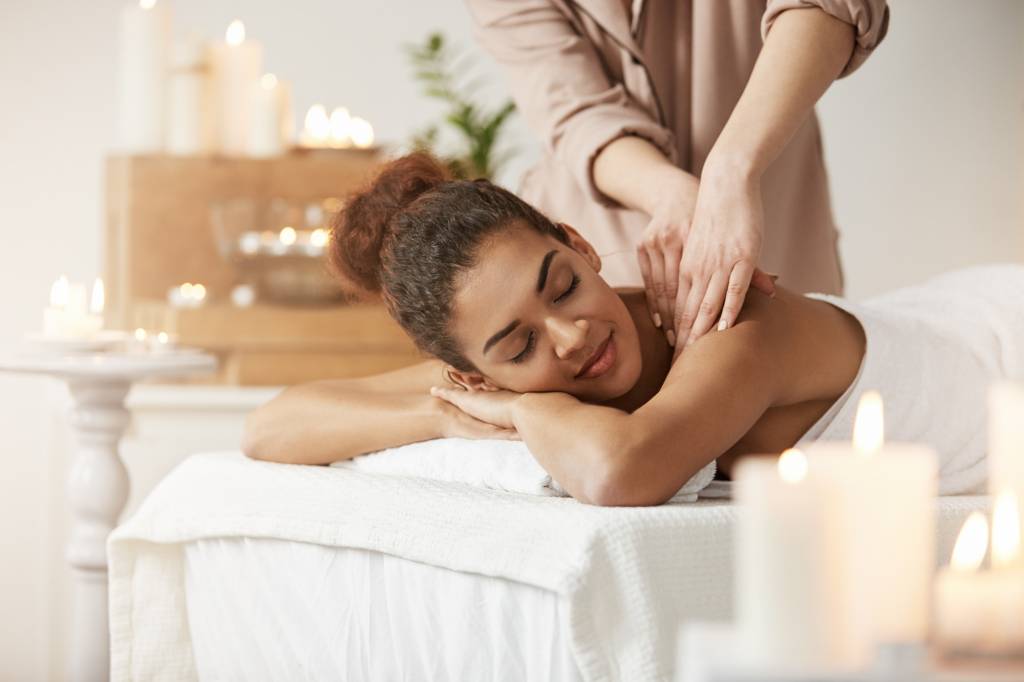Massage is a treatment that uses various forms of physical contact to relax, rejuvenate and heal the body. It is used to treat a wide range of mental and physical health issues and is one of the most popular treatments on a spa menu.
WHAT IS MASSAGE THERAPY?
Massage consists of stroking, tending, warming, rolling and pressing the skin and muscles.
There are many different types of massage, each with widely different origins and goals – some focus on relieving muscle pain; others on increasing energy levels; Some aim to improve a specific physical condition; Others are just to help you relax.


Massage makes you feel better in many ways, and can have a positive effect on your entire body – your bones, your muscles, your heart, your skin, your breathing, digestion and your mental health.
Massage works in several ways:
- It relaxes and refreshes tired or knotted muscles
- It increases blood circulation
- It stimulates deep circulation of both blood and lymph which helps your body heal and generally work more efficiently.
- It encourages your body to produce endorphins – your body’s natural chemicals that make you happy
- It is instinctive to hug or pat someone on the back to comfort or reassure them; In some ways, massage is a formalized version of that instinct.
WHAT ARE THE HEALTH BENEFITS OF MASSAGE?
In its various forms, therapeutic massage can help heal and relieve a variety of complaints. Research shows that it is especially good for relieving stress-related problems, anxiety and panic attacks, from asthma, constipation and high blood pressure. It is effective in providing pain relief – treating chronic pain, back pain and even arthritis. It is being used increasingly with stroke and cancer patients and dementia patients.
Massage stimulates blood flow, which increases the amount of oxygen and nutrients that reach your organs and tissues. While massage encourages your body to perform “good things”; It encourages getting rid of “bad stuff” – waste products, toxins, carbon dioxide and excess water. Stimulating the nervous system and improving the lymphatic system will also boost the immune system.
It can be used to treat certain physical injuries or difficulties, and to help rehabilitate someone after a sports injury. This can help prevent further muscle or tissue damage and improve the athlete’s range of motion.
One of the biggest effects of most complementary massages is that it can make you feel so much better about yourself, more comfortable in your own skin, calm and peaceful.
BEFORE YOU GO
Messages vary, and depending on what type you’re using, there are different things to keep in mind. However, generally speaking you should wear loose clothing – you can keep your clothes on for some types of massage; For others, you take them off, or just wear a towel.
WHAT DO YOU EXPECT
Regardless of the type of massage you get, the massage therapist will ask you some basic questions about your medical history, lifestyle, and general health.
Massage is usually performed in a private area on a massage table or bed. The massage therapist will massage you with their bare hands and possibly their feet or elbows. They may use some massage oil to ease their hands across your skin. The strength of the pressure will vary depending on the type of massage and the parts of the body being massaged.
Session length varies. Depending on the type of massage you are having and the specific area being massaged, the treatment can last from half an hour to half a day. Regardless, make sure you give yourself time to get ready and settle in, as well as time to wrap up afterwards.
HOT TIP!
Get plenty of information in advance about the type of product being used or any precautions they need to take; For example, tell them if you are allergic to something.
Different types of spa and body massage in Dhaka
There are many different massage treatments available:
- BODY SCRUBS
- COUPLE MASSAGE
- HEAD MASSAGES
- FOUR HAND MASSAGE
- STEAM BATH
- MANICURE & PEDICURE


